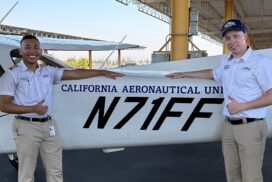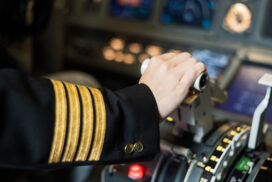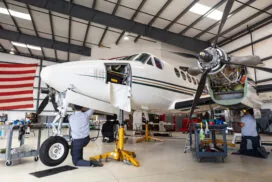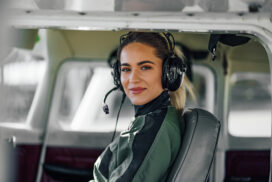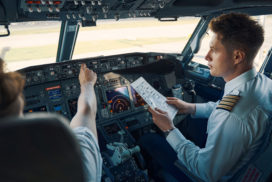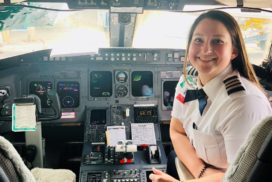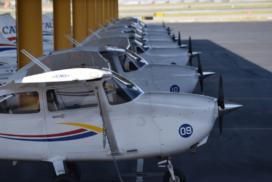Become A Pilot
Are you dreaming of becoming a pilot? Can you envision yourself wearing an airline pilot uniform, traveling to the furthest parts of the world? Or maybe you see yourself flying celebrities around in a private jet? Perhaps you don’t care either way, as long as you’re soaring through the air while watching sunsets at 40,000 feet?
Becoming a pilot doesn’t have to be a dream. While the path to get there may seem elusive at first, learning to fly is a surprisingly attainable goal – and it can be a lucrative one. But how do you get there? What are all of these certificates and ratings? How do you choose a flight school?
In this guide, we’ll discuss what it takes to be a pilot, including commercial pilot career paths, becoming an airline pilot, which pilot certificates and ratings one needs to become a commercial pilot, how to choose a flight school, and what happens once you’ve mastered your pilot career and want to move to the next level.
Ready to become the pilot you're meant to be?
Click below to start your pilot training journey today at CAU!
Contact CAU
Visit CAU
1450 Boughton Drive
Bakersfield, CA 93308
See All Locations
Call CAU
661-615-5915
Email CAU
[email protected]
Why become a pilot?
There are many benefits to becoming a pilot. At the peak of their careers, most commercial pilots enjoy a job that is fun and dynamic- and with the best views! In addition, most commercial pilot jobs offer travel benefits, schedule flexibility, rewarding retirement options, and financial stability.
If you’re reading this, you probably know that flying is exhilarating. Most pilots would agree that even if flying is their job, it’s still a lot of fun. Many pilots enjoy that the workday is sometimes fast paced and other times slow - like taking in the view while in cruise flight or sitting by the pool at the hotel. Working in and around airports means seeing a variety of different workers from ramp agents to dispatchers to mechanics. Every day is different, and while much of the job is predictable, many pilots appreciate that it’s very different from an eight-to-five desk job.
Practically speaking, flying takes you places. One day you’re in Boston, Massachusetts; the next you could be in Shanghai. For those who want to travel and explore the world, being a commercial pilot is an obvious choice. Being able to travel while getting paid at the same time is one of the main benefits of becoming a pilot.
Financial growth and stability is one of the largest benefits of being a pilot – specifically in the current industry environment. Pilot demand is at an all-time high due to a higher than anticipated demand in the post-Covid era along with an unusually large number of retiring pilots. In order to recruit pilots, commercial operators have increased wages and benefits, including signing bonuses. This has resulted in large wage increases and contract improvements across the industry. Pilots today are getting paid more than ever.
The aviation industry continues to face a global pilot shortage, creating strong demand and long-term job stability for aspiring commercial pilots. With this increasing need, pilots benefit from clear career advancement opportunities, progressing from co-pilot to captain and even into management or training roles. As airlines expand and more flights are needed, the career growth potential for well-trained pilots remains robust and promising.
Pilot work schedules have a wide range of possibilities depending on the type of job. A corporate pilot might be on call for several days out of the week (often in eight- or 12- hour shifts), but they may only actually fly one or two of those days. A cargo pilot might fly two weeks on, exclusively at night, and then enjoy two weeks off. An airline pilot might fly three days on and then have four days off. And sometimes pilots can choose their schedules and often end up with more days off per month than they work.
Commercial Pilot Career Paths
Becoming a commercial pilot means getting paid to fly – and there are many commercial pilot career paths to choose from! While the term “commercial pilot” often brings up images of airline pilots, commercial pilots are just pilots who have earned a commercial pilot certificate and can legally fly aircraft in exchange for money. Airline pilots are one type of commercial pilot, but there are many others to consider when looking at pilot careers.
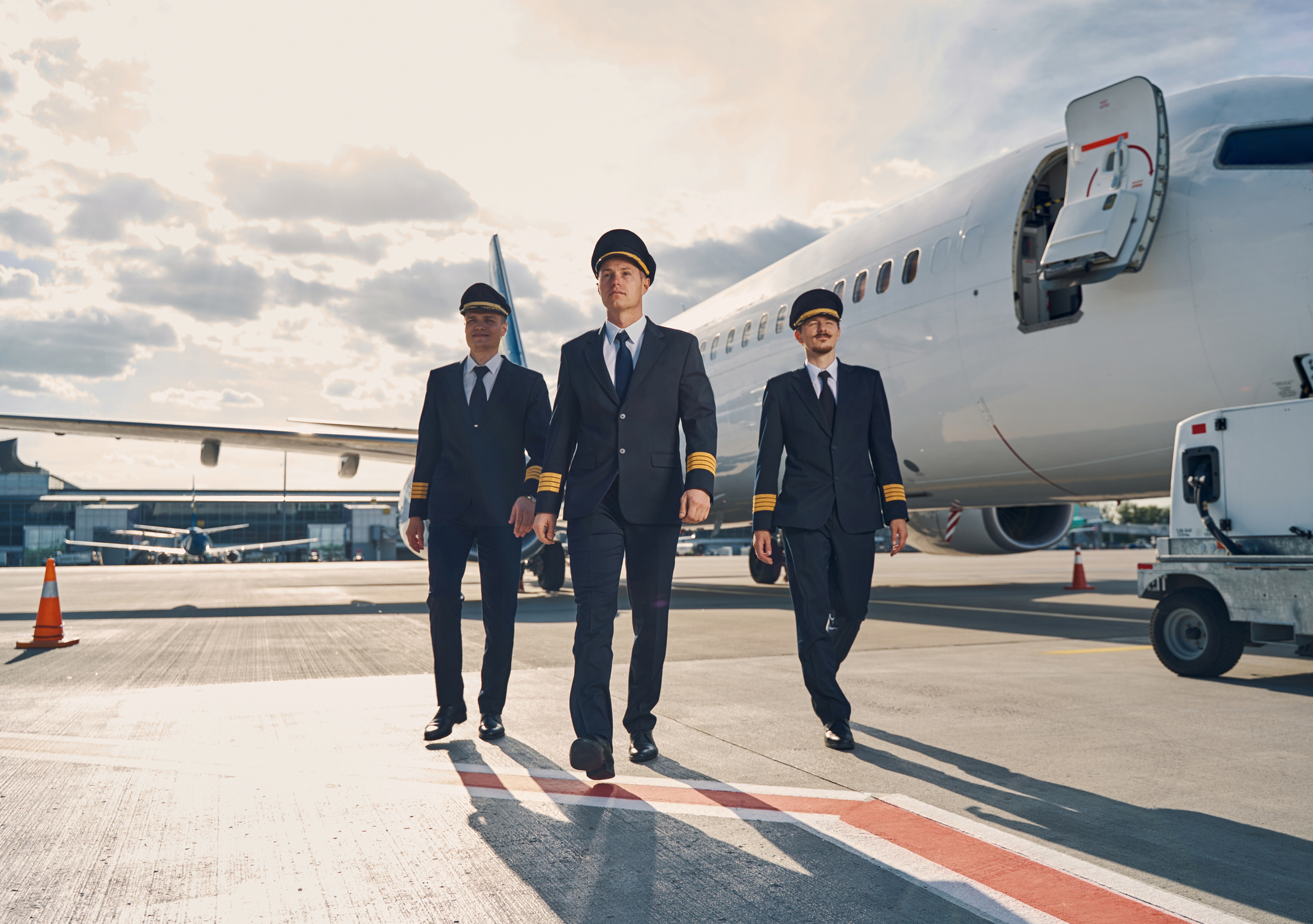
Transportation & Infrastructure
The world moves people and products through many forms of transportation – boats, trains, vehicles, and, of course, airplanes. The aviation industry provides a transportation network around the globe, impacting businesses and travel in every country. According to the International Civil Aviation Organization (ICAO), “aviation transports close to 2 billion passengers annually and 40% of interregional exports of goods (by value).”
And forty percent of the world’s tourists travel by airplane, according to ICAO.
We do this primarily through international and domestic cargo operations and airline operations. As possibly the world’s most essential industry, cargo pilot jobs and airline pilot jobs are abundant in this sector.
Popular Careers: Airline Pilot, Cargo Pilot
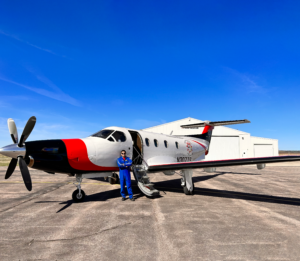
Healthcare
The healthcare industry employs pilots to transport people, medications, and organs to and from hospitals and clinics throughout our healthcare system. This sector employs both fixed-wing and helicopter pilots in a variety of areas such as air ambulance, organ transport, and medical supply transport. The life-saving actions of pilots make this one of the most rewarding pilot careers.
Popular Careers: EMS Pilot, Air Ambulance Helicopter Pilot
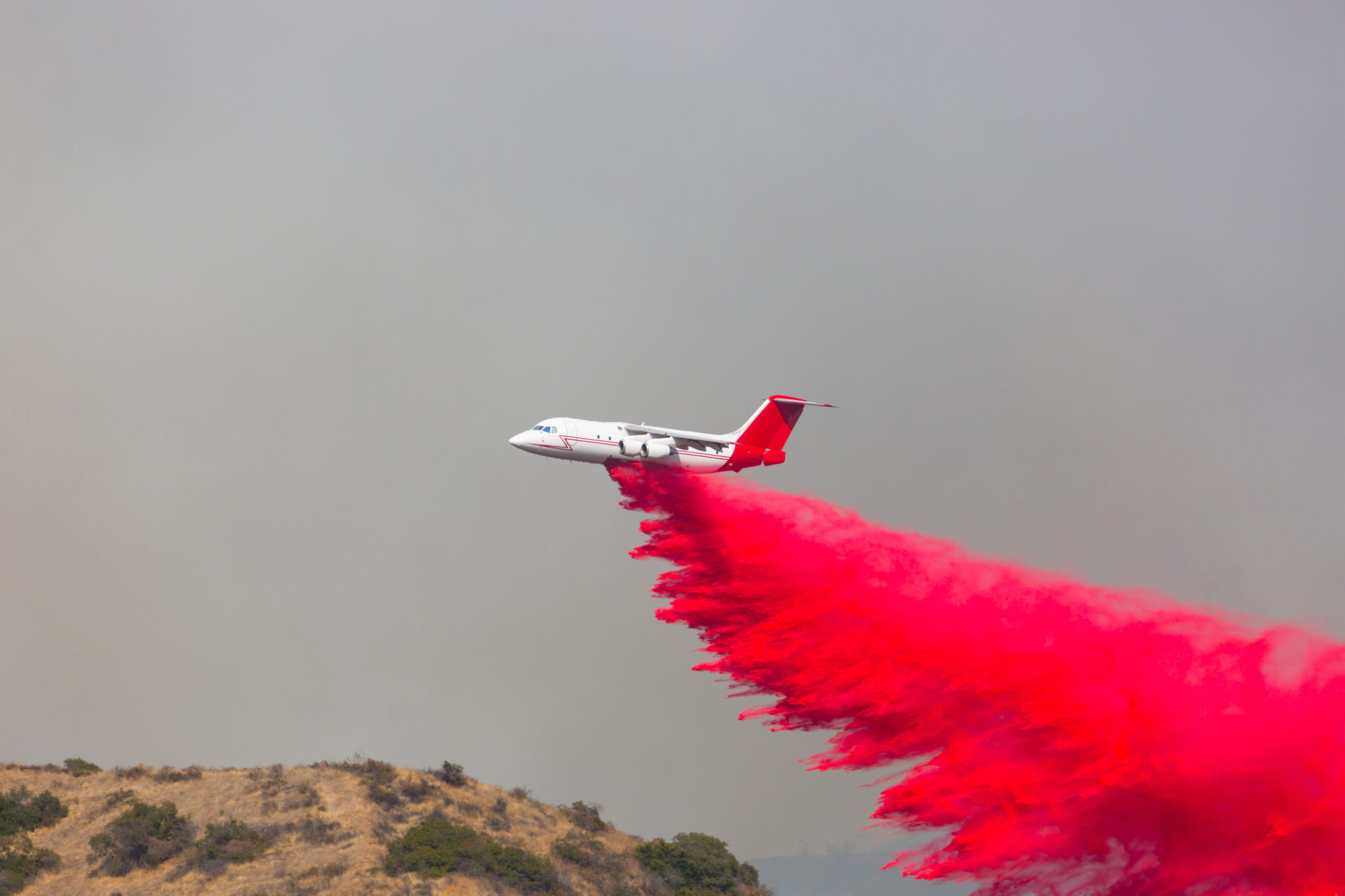
Law Enforcement & Public Safety
Law enforcement and public safety pilots serve the public in many ways, from police patrol helicopters, prisoner transport, search and rescue operations, firefighting, and disaster recovery efforts. Many public sector flying careers involve specialized training outside of flight training. Law enforcement jobs, for example, often require pilots to go to the Police Academy and be trained as a police officer before working as a pilot for that organization.
Popular Careers: Police Pilot, Search and Rescue Pilot, Firefighting Pilot
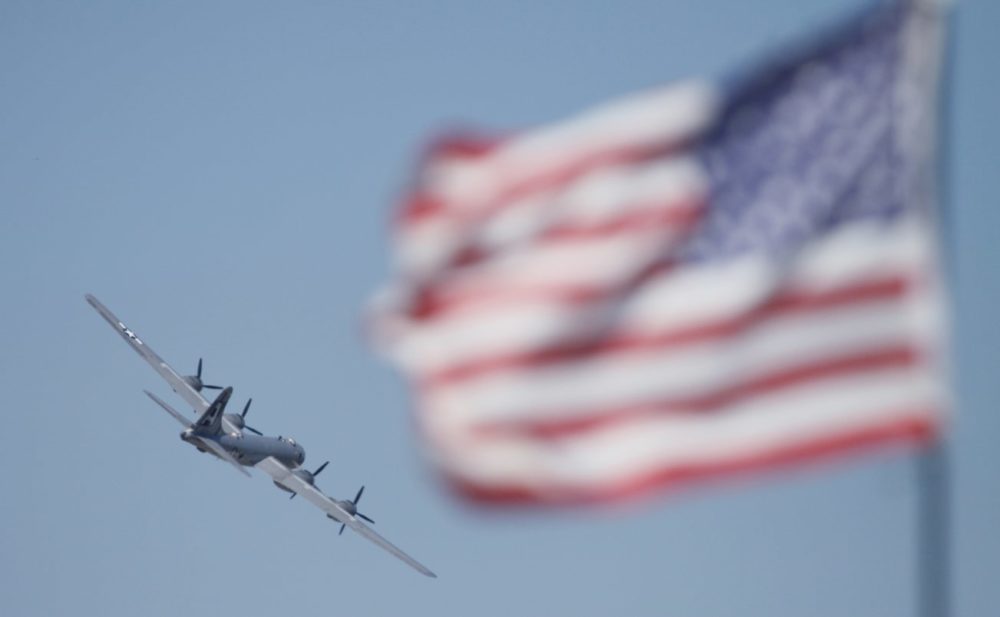
Military
For those who want to help serve their country, military flying can be an honorable and fulfilling career. It’s also a pilot career with many benefits, including paid training, competitive salary, world travel, paid healthcare, and much more. Military pilots commonly enter the Air Force to fly one of its numerous aircraft types, but the U.S. Army, Coast Guard, Navy, and the recently added Space Force all have aviation components. A pilot in the Air Force might fly heavy fixed-wing jets internationally while a Coast Guard pilot might fly helicopters in search and rescue missions on the beach.
Popular Careers: Air Force, Army, Navy, Marine Corps, Coast Guard
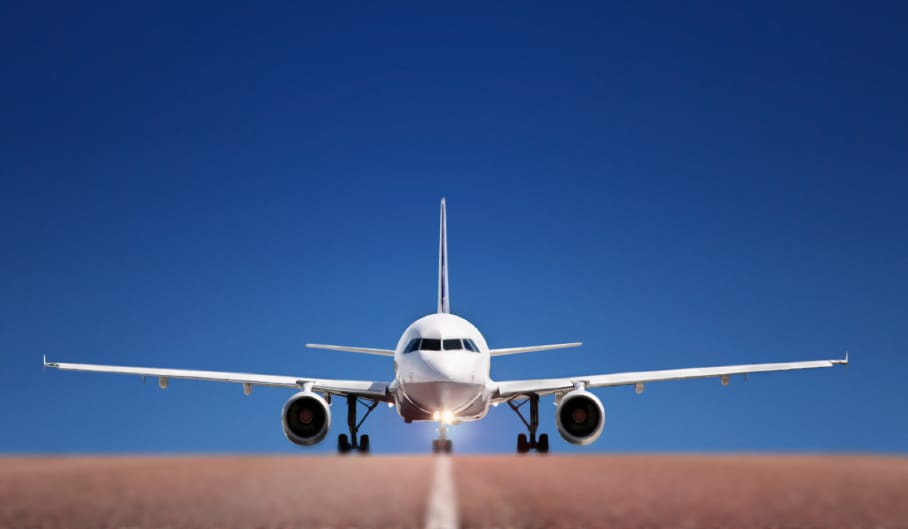
Corporate & Business
Business travelers can’t wait for airline schedules to align with their own, and they often need to fly into airports and locations that are not served by traditional commercial airlines. Companies large and small rely on business jets and helicopters to get where they need to go expediently. Pilots of corporate flight departments may fly small or large aircraft in the general aviation sector. Pilots flying in the business aviation sector might be tasked with more than flying: Flight planning, baggage handling, catering, customer service, and tour services, among other things. But sometimes it also comes with luxury destinations and an unlimited credit card for travel incidentals.
Popular Careers: Corporate Pilot, Captain, Private Charter Pilot
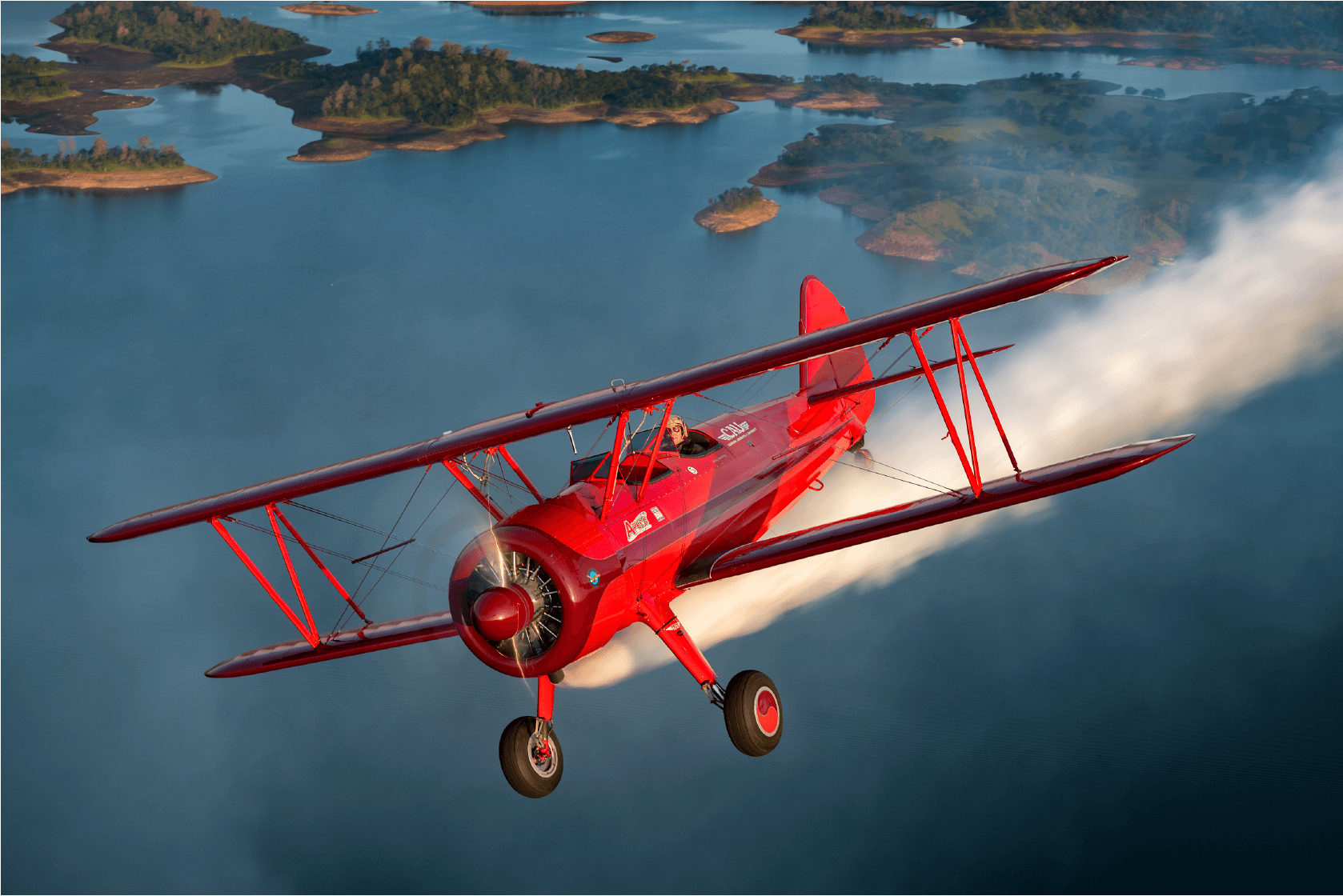
Tourism & Recreation
If you enjoy giving tours or have a passion for a specific tourist destination, consider doing them from an airplane! Grand Canyon tours or helicopter tours in Hawaii are great career options for pilots. Some of these jobs tend to pay less than other pilot jobs, so they’re often considered stepping-stone careers for pilots.
In addition, you'll often find skydiving operations in the same tourist locations. Jump pilots take a team of skydivers up to a drop zone, which involves special considerations for wind, weather, weight and balance, and airspace.
Popular Careers: Tour Pilot, Helicopter Tour Pilot, Jump Pilot

Agriculture, Oil, and Specialized Industries
It’s impossible to discover every single commercial pilot job in a single article, but some of the common jobs outside of the above categories include agricultural pilots, pipeline patrol pilots, and other specialized industry pilots like helicopter pilots at oil rigs or aerial saw pilots. Agricultural pilots work to spray fields on farms or perform mosquito or bug abatement. Pipeline pilots might work for an oil or gas company inspecting oil or gas lines over acres of property. Aerial saw pilots often work for private companies removing trees from power lines or other hard to reach areas.
Popular Careers: Aerial Applicator, Offshore Pilot
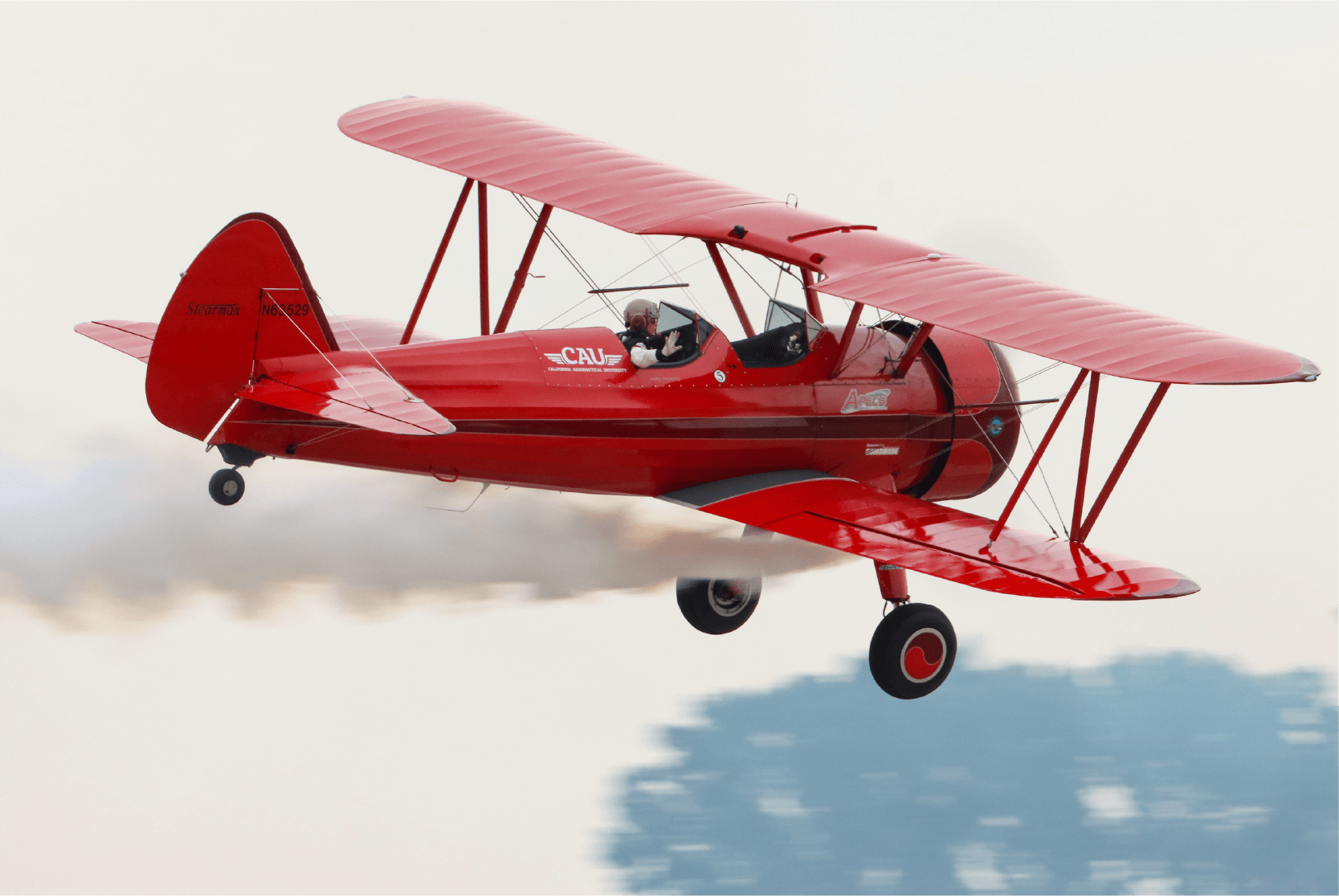
Media and Entertainment
In the media world, pilots perform stunts for movies or television, perform flyovers for sports games, or perform at air shows or air races. These positions are less common, harder to get into, and the pay scales and schedules are diverse and often unpredictable. But if entertaining is your dream, flying for entertainment purposes is sure to be an exciting job!
Popular Careers: Aerial Pilot, Aviator
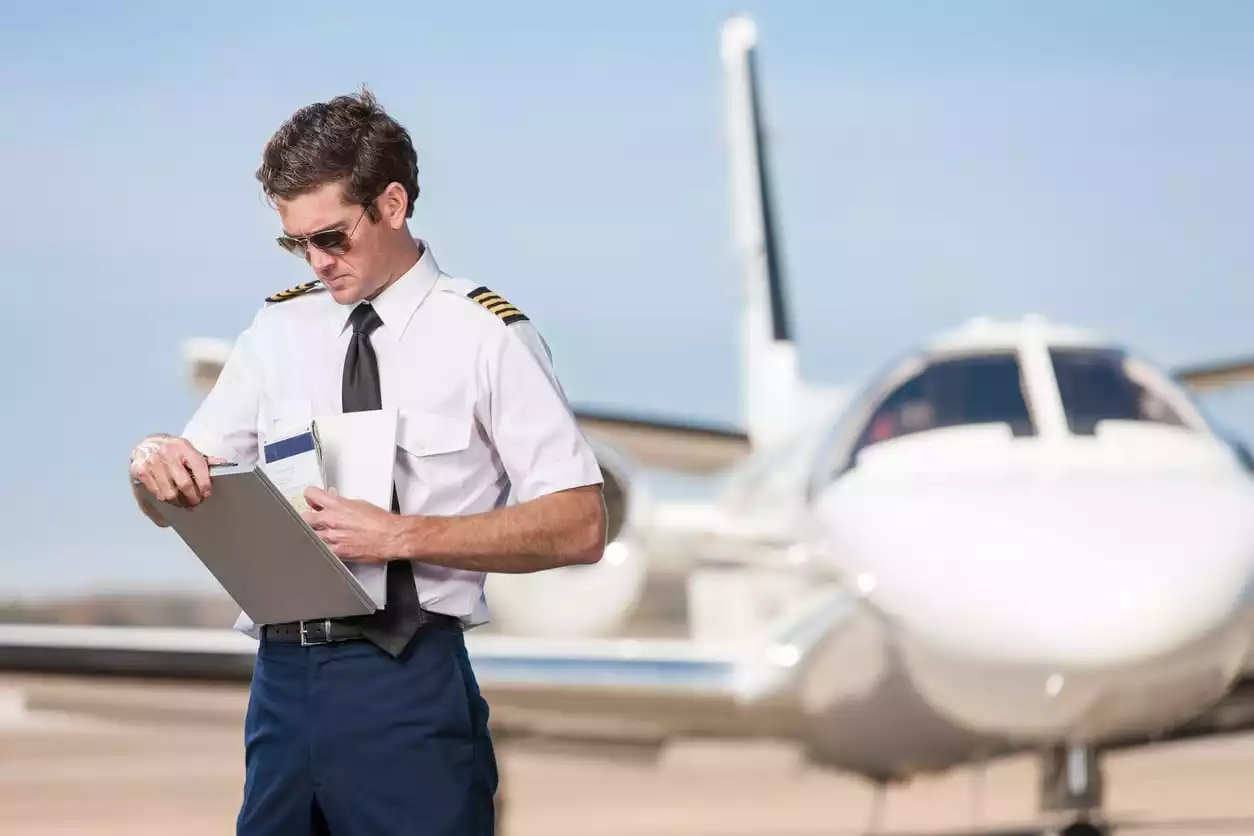
Education & Training
Someone must train the world’s pilots, and many have made a career out of flight instruction. Flight instruction can be very exciting, and for those who are passionate about educating, teaching people how to fly is one of the most rewarding flying jobs out there. Certified Flight Instructors can work independently as a contractor or as an employee of a flight school. Many pilots who want to move on to other commercial pilot careers begin gaining the required experience by flight instructing. Others make teaching others to fly a lifetime career.
Popular Careers: Certified Flight Instructor (CFI), Certified Flight Instructor - Instrument (CFII), Multi-Engine Instructor (MEI), Chief Flight Instructor, Assistant Chief Flight Instructor, Advanced Ground Instructor (AGI), Basic Ground Instructor (BGI), Master Certified Flight Instructor (MCFI), Designated Pilot Examiner (DPE), Type Rating Instructor (TRI)
The Airline Pilot Career
While airline pilots are commercial pilots who provide varying types of transportation (see previous section), they are also required to obtain their Airline Transport Pilot (ATP) Certification in order to fly for an airline. A pilot who obtains a commercial pilot certificate through a standard flight training program typically has about 250 total flight hours. To obtain an Airline Transport Pilot Certificate, one needs 1500 hours of various types of flight time. To bridge that gap between hour requirements, commercial pilots typically gain experience and hours through one of the other commercial pilot jobs above to qualify for an ATP certificate. You can think of the ATP certificate as a higher level of career training beyond commercial pilot training.
In addition to the ATP certificate, any aircraft over 12,500 pounds (max certificated takeoff weight) requires the pilot to have a type-specific rating for that aircraft, called a “type rating.” A Boeing 737 pilot, for example, requires an ATP certificate plus a Boeing 737 Type Rating, among other hiring requirements that may vary per airline.
Once an ATP certificate and any required type ratings are obtained, pilots usually fly first for a small charter company or regional airline before gaining the required experience for a major airline.
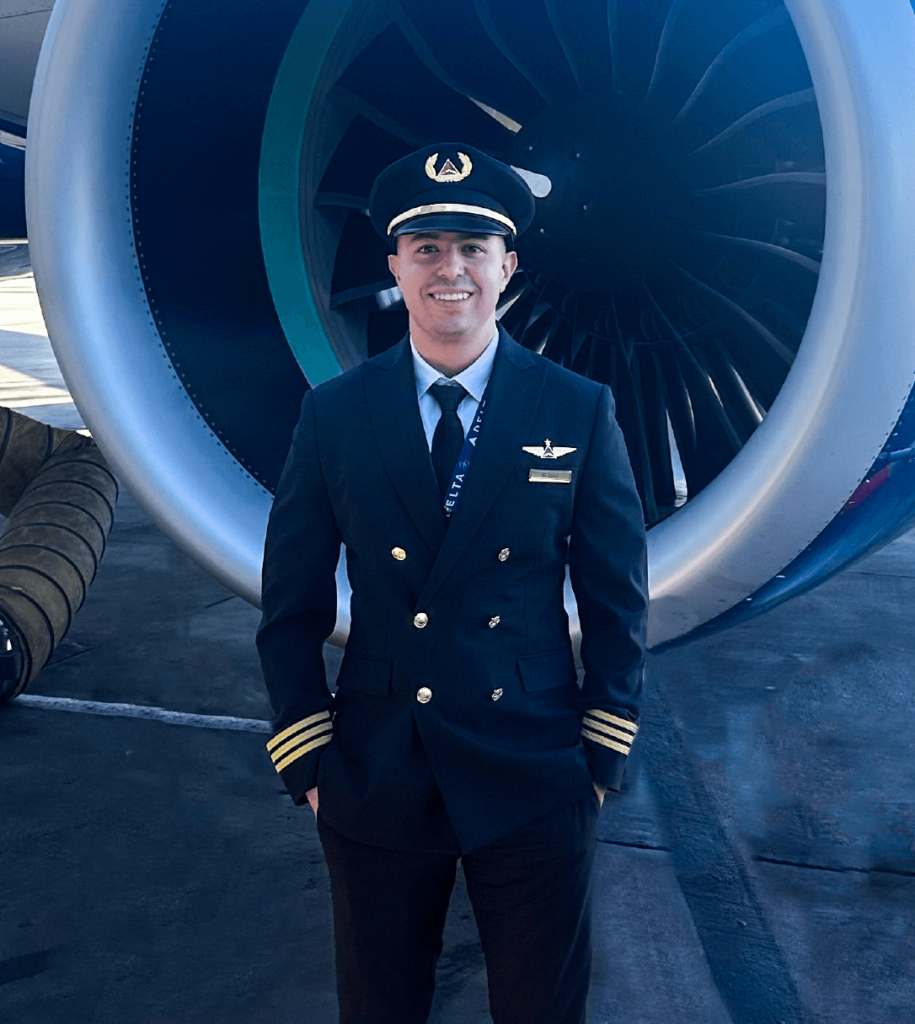
Major airlines are defined as airlines with over $1 billion in revenue per year, according to the U.S. Department of Transportation. These airlines usually fly multiple types of large aircraft over international routes and through all of the major cities. There are currently 13 major airlines in the United States, including Delta Air Lines, American Airlines, and United Airlines (“The Big 3”), as well as Southwest Airlines. These jobs are considered the best airline pilot jobs out there. The pay is lucrative, the schedules are flexible, and the quality of life for most of the pilots at these airlines is very good.
Most major airlines have requirements that are higher than the standard ATP certificate requirements. Historically, pilots have had to spend years at a regional airline, amassing hours of pilot in command (Airline Captain), a college degree, and maybe even management or check airman experience at an airline to be competitive enough to apply to a major airline. With today’s pilot shortage, many of these requirements have been waived, allowing for pilots to be hired at major airlines with fewer hours and no college degree.
Low-Cost carriers, or LCCs, are budget carriers. They’re often smaller than major airlines, but not always, and they may still fly international routes. They are known for keeping their costs low, having “no frills,” and flying to smaller markets. Airlines like Southwest Airlines, Spirit Airlines, and Frontier Airlines are all considered LCCs. Notice that Southwest Airlines is a Major Airline and a LCC; the categories can overlap.
Regional Airlines, or “commuter airlines” connect passengers from the major hub airports that the major airlines serve and smaller community airports. These airlines usually operate smaller aircraft, have fewer pilots on staff, and some operate in regional areas. They often operate in partnership with a larger airline. For example, Skywest Airlines flies small 76-seat Embraer Regional Jets (ERJs) on regional routes and has partnerships with Alaska Airlines, Delta Air Lines, United Airlines, and American Airlines. Horizon Air is a regional airline owned by Alaska Airlines, and it operates the E175 in the Pacific Northwest and Canada to smaller airports on behalf of Alaska Airlines.
Pilots who enter the airline world usually enter at a regional level, sometimes with fresh ATP certificates and 1500 hours. Historically, hiring standards have still been competitive for regional airlines, but with the current pilot shortage, regional airlines are hiring pilots with minimum-required hours for the Airline Transport Pilot Certificate.
Charter flights are essentially passenger flights that are operated on an unscheduled basis. Scheduled airlines must abide by a set of FAA rules for scheduled airlines. Chater flights operate on a separate set of FAA rules for unscheduled flights. (Fun fact: Airlines also operate charter flights! They just change their procedures to fit within whichever set of rules they need to.)
A sports team, for example, can (and they do) charter with Delta Air Lines to provide a private flight for the team and coaches. Airlines can offer charter operations, but there are other private companies that offer charter flights, as well. These flights can operate under either FAA Part 91 rules or FAA part 135 rules. The major difference is that Part 91 flights are operated for non-commercial, personal or business use (still operated by a commercial pilot) while Part 135 charter fights are considered commercial operations and include air taxi and private charter operations. As a commercial operation, Part 135 charter operators are subject to more stringent rules and regulations, and often come with an entire flight department, including management pilots, maintenance staff, dispatchers, and support staff.
Become An Airline Pilot
Lift off toward your future pilot career with training at CAU. Classes offered year round and start every 10 weeks.
Pilot Career Advancement
If you’re on the path to achievement, why stop at flying airplanes? The aviation industry needs pilots in advanced roles and managerial positions, too. Most companies have advancement opportunities for those who wish to take their pilot career to the next level.
Many of these opportunities will require further education, including graduate level education and research, and/or extensive on-the-job experience.
Pilots just starting their careers will probably be focused on flying, but that doesn’t mean there aren’t opportunities available to stand out in the crowd. If you’re beginning your commercial pilot career giving tours of the Grand Canyon, consider joining (or creating) the company’s safety team. Or, if your company doesn’t have any opportunities, you can stand out by networking with the neighboring companies to provide safety nights or info sessions to your group of pilots. You might not get compensated for these things, but at the entry level positions, your job is just to make an impact however you can.
At an airline, mid-level career progression looks like volunteering for a safety committee or as a project pilot. There are often positions open at airlines in safety departments, teaching classroom topics to fellow pilots, becoming an instructor pilot or simulator instructor, or just being a mentor pilot to new, onboarding pilots.
Senior-level managers in aviation are the ones making a difference. They’re creating safety programs, attending conferences to learn how to make their companies better, and communicating with executives about the needs of the pilots. A senior-level employee might be a Chief Pilot or run a committee. They may create the new training curriculum or work in the training department to create simulator scenarios.
At the executive level are CEOs, CFOs, and all those high-level suit-and tie people who attend all the meetings and make all the decisions. These managers are tasked with the higher-level decision making associated with daily operations. With the right experience you may find yourself running an airline or charter company someday. These jobs often require some level of higher education – a master’s degree in a related field, an MBA, or some other high-level experience.
The board of directors of a company influences the direction of the company. Board members often have extensive experience in a field – they’ve been CEOs or executives of companies before. They look for strategic opportunities and direct their research and thoughts to the company executives for implementation. Board member opportunities at small companies and nonprofit organizations might exist more commonly and have less stringent requirements than board members of a Fortune 500 flight department. Regardless, it never hurts to shoot for the highest education available and as you gain experience, you may be eligible for a coveted board position before you know it!
Becoming a Pilot
Now that you know the types of pilot career paths there are and how you might advance in your career, how do you actually become a pilot?
Becoming a pilot is a big decision – but once you’ve decided to take the leap, the rest is a simple step-by-step process. First, you’ll want to research and learn about the process, and potentially think more about your career goals. Perhaps you have an exact path in mind. Or perhaps you’re excited about more than one path.
You don’t have to know the answers right away, and you can always change your mind, but it helps to have some background information on which path to take. When it comes to charting your course, there are a few more things to consider: your specific career path, the aircraft available to fly, which certificates and ratings to get, and how to choose a flight school.
 Choosing Your Pilot Career
Choosing Your Pilot Career
So you want to be a pilot? What kind of pilot? Are you a thrill-seeker and will only be happy if the flying is fast and versatile? Do you want to race airplanes or do aerobatics at an air show? Or do you want to drink your coffee and read the paper while cruising along in a predictable, managed flying environment?
Do you want to fight fires for the Forest Service for months straight in the summer and take all winter off to snowboard? Or do you want to work two weeks on and have two weeks of rach month off while flying on a corporate jet to the Bahamas to golf while waiting on your private passengers?
Do you want to chase down criminals in a highly dynamic environment and a highly dynamic helicopter, or do you want to fly straight and level chartering businesspeople in and out of New York City?
Do you want to get a college degree (sometimes required to be competitive at most major airlines) or is higher education not for you and you want to just get straight to work flying an agricultural aircraft for farmers?
As you can see, there’s a bit more to choosing a pilot career path than just deciding to be a pilot and beginning flight training. Think about the pilot jobs listed above. They are all very different. Between quality of life, salary, benefits, work schedules, risk level, workplace environment, pace, skill level, and job entry requirements, there are a lot of factors to consider when choosing a pilot career.
Consider also your own personality, skills, and needs, and if your personality will fit better with one of these job types better than another.
 Choosing Your Aircraft
Choosing Your Aircraft
While your career choice may dictate the aircraft you want to fly, sometimes your aircraft choice will dictate your career. If you absolutely love helicopters and must fly one, you might look at medical jobs, helicopter tours, or the Coast Guard.
But there are more than just helicopters and airliners. The Pilots Handbook of Aeronautical Knowledge outlines the following types of aircraft:
-
-
- Airplane
- Glider
- Lighter- than -air (airship, balloon)
- Powered-Lift
- Powered-Parachute
- Rocket
- Rotorcraft (gyroplane, helicopter)
- Weight-Shift Control
-
Most, but not all, of the pilot career opportunities will lie within the aircraft and rotorcraft classifications. But don’t discount that there may be opportunities for careers in the hot air balloon or blimp sectors.
 Earning Your Pilot Certifications & Ratings
Earning Your Pilot Certifications & Ratings
Once you’ve identified a career path, you can begin to look at the certificates and ratings you’ll need to get there. In general, most career pilots will need a commercial pilot license, whether that’s in a helicopter, balloon, or airplane. You’ll start with a student pilot certificate and work your way up to commercial and possible ATP certificates.
It’s important to note that there are pilot certificates (not licenses – that’s a term the common man uses but there’s no such thing in FAA language) and then there are ratings, which are basically privileges that are added on to an already-earned pilot certificate. You can’t just get an Instrument Rating, for example, without having a certificate to attach it to. In this regard, ratings come after you get the certificate. You can attach an Instrument Rating to a Private Pilot Certificate or a Commercial Pilot Certificate, for example.
Student Pilot Certificate
A student pilot certificate is required before you fly solo, and allows you to fly with a flight instructor or under the supervision of a flight instructor for solo flight. To obtain a student pilot certificate, you must be 16 years old and read, speak, write, and understand English.
Sport Pilot Certificate
The creation of the sport pilot certificate was a way to make flying more affordable for those who don’t want to invest all of the hours required to become a private pilot, and who want to fly locally in only light sport aircraft and with limitations. The sport pilot certificate also allows pilots to fly without the full aviation medical exam that is normally required - again with limitations.
Recreational Pilot Certificate
The recreational pilot certificate requires fewer hours to complete than the private pilot certificate, and has more restrictions, such as having to stay with 50 miles of the pilot’s home base. Before the Sport Pilot Certificate, it was a good option for hobby pilots but it’s an uncommon certificate today.
Private Pilot Certificate
To obtain a private pilot certificate, one must be 17 years of age, read, speak, write and understand English, pass a written exam, and complete at least 40 hours of flight training, although the average is more like 70 hours.
The private pilot certificate has fewer restrictions than the sport pilot or recreational pilot certificate, and is a prerequisite for further training, so most people who want a pilot career will start with a private pilot certificate. Private pilots can carry passengers but are not allowed to accept payment for flying services.
Commercial Pilot Certificate
The Commercial Pilot Certificate is an advanced pilot certificate that involves advanced study topics and more precise maneuvers training. The commercial pilot certificate also allows a pilot to fly for hire – they can be legally compensated to fly passengers or cargo.
Pilot Ratings
Pilot ratings are different from certificates. They require additional training and are attached to an already-earned certificate. The instrument rating and multi-engine ratings discussed below can be attached to either a private pilot certificate or a commercial pilot certificate.
-
-
-
- Instrument Rating – A private pilot certificate is somewhat restrictive with regards to weather, allowing a pilot to fly in only visual meteorological conditions. An instrument rating (IR) allows a pilot to fly under less-than-favorable weather conditions (marginal or instrument meteorological conditions). An instrument rating allows a pilot to fly in fog or clouds, depending solely on aircraft instrumentation for navigation.
- Multi-Engine Rating – Anyone who wants to fly an aircraft with more than one engine is required to obtain a multi-engine rating, which include specific training for engine failures.
- Type Rating – Aircraft over 12,500 pounds, turbojet powered aircraft, and any other special aircraft that the FAA deems necessary all require a specific aircraft type rating. These are required for jets, airliners, and specialty aircraft that for obvious purposes require their own specific training.
-
-
Flight Instructor
For most career pilots, the step after earning a commercial pilot certificate is the certified flight instructor certificate. Pilots will typically earn their commercial certificate with about 250 total hours. To get most entry-level commercial pilot jobs, however, more hours and experience are needed. One way to obtain those hours is to become a flight instructor.
-
-
-
- Certified Flight Instructor (CFI): The CFI certificate is one of the most intensive and difficult certificates to earn. It’s extensive, covers every topic in training that exists, and enables you to teach student pilots and commercial pilots. Instrument flight training, however, requires an additional rating- the Certified Flight Instructor Instrument rating (CFII).
- Certified Flight Instructor Instrument (CFII): The CFI- Instrument rating allows an already-certificated instructor to teach instrument students.
- Multi-Engine Instructor (MEI): The MEI allows an already-certified instructor to teach multi-engine students in multi-engine aircraft. It’s a sought-after rating since hiring qualifications for many commercial jobs include a certain number of multi-engine hours.
-
-
Airline Transport Pilot Certificate
If you want to become an airline pilot, the final pilot certificate you’ll get is the airline transport pilot certificate. All airlines require it, and some other commercial operators may require it, too. Except for additional type ratings for each aircraft you fly, the ATP certificate is highest and final certificate you’ll get.
To obtain an ATP, one must be 23 years old (20 years old for military members), have a commercial pilot certificate with an instrument rating, have 1500 hour of flight time (there are certain exceptions, take the ATP course and pass the FAA ATP knowledge test.
 Choosing Your Flight School
Choosing Your Flight School
Before choosing a flight school, it’s important to look at the different options and types of training environments. When it comes to pilot training, not every school is the same. The FAA has divided flight training schools and training centers into three main categories for flight training: Part 61 and Part 141 schools, which are initial training programs, and Part 142 flight training academies, which are mostly simulator-based, airline-focused training academies for advanced training.
The “parts” discussed here come from Title 14 of the Code of Federal Regulations (CFR), titled “Aeronautics and Space” and are comprised of all of the Federal Aviation Regulations (FARs) surrounding pilot certification, airspace, and operating an aircraft.
-
-
- FAR Part 61 is titled “Certification of Airmen”
- FAR Part 141 is titled “Pilot Schools”
- FAR Part 142 is titled “Training Centers”
-
From your time as a student pilot through your commercial and CFI certificates, you’ll be primarily involved with either Part 61 or Part 141 schools.
Both types teach the same material, and each has advantages and disadvantages. You can think of Part 61 fight training as flexible, at-your-own pace training at your local airport. Part 141 schools are often larger, fast-paced programs with more structure and continuity.
Part 142 Flight Training Academies
Flight training academies are high-level simulator training academies that prepare airline pilots and corporate pilots for advanced training and aircraft type ratings. Airlines often have their own simulators, and as such, their own training academies. Other academies, such as FlightSafety International, have simulator training programs for a variety of aircraft from business jets to airliners. These training programs are highly regulated by the FAA.
Part 141 Flight Schools
Part 141 flight schools submit to a lengthy application process with the FAA to become certified as a Part 141 flight school. They are then approved by the FAA at a higher standard, and they are required to provide continuity, making sure aircraft and instructors are available to students. They have an FAA-approved standardized training program for each student, and must meet a certain pass rate.
Part 141 schools often have a hierarchy, with multiple instructors, a chief pilot, check airmen, dispatchers, training standards, and other support personnel. Students who train under a Part 141 program are allowed to complete certain certificates and ratings with fewer hour requirements based on the structured environment.
Disadvantages to Part 141 training include:
-
-
-
- The direct costs can be higher than Part 61 training, although some of the program can be done in fewer hours, saving some of those costs.
- The pace is set for the student and often doesn’t allow for enough extra training time if a student falls behind.
- There’s little or no flexibility in when a student flies – some training programs expect you to fly when they schedule you.
-
-
Part 61 Flight Schools
Part 61 flight schools are operating under the original flight school standards, which just outline the hours a student needs and the topics that need to be covered. It’s up to the instructor and the student to determine how and when it all gets accomplished. This can allow for more flexibility, especially for students who can’t accommodate a traditional full-time school schedule due to jobs, family, etc.
Disadvantages to Part 61 flight training include:
-
-
-
- Lack of structure: While the same material is covered under Part 61 that’s covered under Part 141, the structure can vary wildly under Part 61. It’s up to each individual instructor how they want to structure their lesson plans
- Training delays: If the instructor is unavailable or the aircraft breaks down, there may be significant delays.
- Lack of continuity and standardization: Inside of a Part 61 school, each instructor may have a different syllabus, if they use one at all. A student who changes instructors may experience setbacks and frustration.
-
-
If that’s not enough, it can get even more confusing when the same flight school offers both Part 141 and Part 61 training! This is either because they want the flexibility to market toward every type of student and/or only portions of their program were approved by the FAA for Part 141 training.
It’s important to know what type of student you are, as both of these programs have advantages and disadvantages. Either program can work for you, but one may be preferable to the other depending on your learning style, schedule, and need for structure.
Flight School Guides
Do you need a degree to be a pilot?
One of the most asked questions from people who want to become pilots is “do I need a degree to be a pilot?” The Federal Bureau of Labor Statistics states that “airline pilots typically need a bachelor’s degree in any field [while] commercial pilots typically complete flight training, and some employers require or prefer that...
Navigating the Skies: The Key to Choosing the Right Aviation University
Choosing the right aviation school to kick off your flying journey is crucial, and undoubtedly, a tad bit daunting. Making an informed decision involves conducting extensive research and asking the right questions. However, not putting in the effort to thoughtfully select the right aviation university can lead to wasting both time and money. Time: Attending...
7 Tips for Success in Flight Training School
Enrolling in a flight training school is a very big step toward your future as a pilot. However, it is important to remember that it is only the first step. Once you begin your program there are additional steps you are going to have to take in order to make sure you are getting the...
Part 141 vs 61 Flight Schools: Which Is Right For You?
When making the decision to be a pilot, you have to choose the best way to reach your goals. A quick search online and you can see that there are many flight schools all around the country offering you a future in the sky. Each aviation program and flight school has something to offer, but...
How to Finance Flight School
Wondering how to finance flight school? Getting into flight school is an incredible milestone for someone who has always had the dream of becoming a pilot, as it is the first step towards reaching your ultimate career goal. The next step after being accepted into a program, though, is finding a way to cover the...
6 Benefits of In-House Aviation Training
If you are ready to start flight training, you may know that various paths and options are open. Before listing the benefits of in-house aviation training, let’s define that term – what does it mean? What Is In-House Aviation Training? In-house aviation training means logging your flight hours at the same place you are doing...
7 Ways to Get Ready for Flight Training School
Deciding to go to flight training school can be very exciting. Numerous universities and colleges offer aviation instruction programs where you can earn your pilot certifications, including instrument ratings and more. Some, like CAU, even provide the opportunity to study for your bachelor’s degree at the same time. If you have determined that you want...
Beyond High School: How to Choose a Reputable Flight School
A career as a pilot includes traveling and getting the best views from heights of around 36,000 feet. It has thrills like no other profession. Each day of being a pilot brings new challenges which keep every day fresh and exciting. The chance of meeting new people is also a significant factor, and you may...
Searching For a School of Aviation? Here Are 8 Things to Look For
When searching for a school of aviation to launch your aviation career, look for these 8 characteristics. [lwptoc skipHeadingText=”Share This:”] If you are searching for an aviation school, you have probably realized that there are many options to consider. Your choice of aviation university could influence your path into the future. Today we will highlight...
5 Great Reasons to Choose Part 141 Flight Schools
If you are interested in becoming a pilot or working in the aviation industry, you’ll want to consider attending Part 141 flight schools – here is why. All flying schools are the same, right? Actually, no, not quite. If you want to become a pilot, choosing a quality flight school should feature high on your...
Pilot FAQs
Eligibility & Qualifications
No, it is not required to have a college degree to be a pilot. However, a degree can help you stand out from other candidates and can offer time-saving benefits.
No, a bachelor's degree is not required to be a pilot. However, a degree can help you stand out from other candidates and can offer time-saving benefits as well as benefit long-term career growth.
Yes!
There is a process that pilots go through that involves an Aviation Medical Examiner, and it depends on how long you’ve been diagnosed, if you’re on medications, which medications, what the psychologist report says, and many other factors. But it’s absolutely possible – many have gone through that process successfully.
It’s best to consult an Aviation Medical Examiner for your specific case.
You can begin flight training at any age. You have to be 16 to solo an airplane or to get a private pilot certificate (14 years old for a balloon or glider). You need to be 18 years old for a commercial pilot certificate, and 23 years old to get an airline transport pilot certificate (21 if you have a bachelor's degree).
There’s inherent risk in everything you do. Being a pilot increases risk, but the aviation industry is intensively a risk-management industry, making flying airplanes statistically very safe.
There are no specific requirements for height. You just have to be tall enough to reach the rudder pedals and have long enough arms to reach switches on the overhead panels. Most airline flight decks have adjustable rudder pedals that accommodate most everyone. Very short people or tall people may be more comfortable in certain aircraft, but there’s no requirement.
Sometimes. An aviation medical examiner would have to consider your specific case.
An aviation medical examiner must review the person’s specific case. Sometimes, if the DUI was a certain number of years ago and there haven’t been any more legal problems, it’s allowed. More than one DUI or other legal issues may preclude a person from getting an aviation medical. Certain companies also have their own requirements. For example, some countries don’t allow people with DUIs into the country; if a company flies there, you’re not likely to be hired there.
It depends. An aviation medical examiner can review specific cases. The FAA has a mandate that an airline pilot must be “of good moral character” so it likely depends on the type of felony and individual circumstances. In addition, each company will have different requirements for hiring individuals.
Cost & Compensation
Expensive is relative. For the average American, yes, flying is expensive. But the payoff of being an airline pilot and making a six-figure salary can make it worth it to many pilots.
It costs anywhere from $10,000 - $30,000, depending on factors like weather, schedules, aircraft availability and your earning process.
This depends on the type of pilot job, and your definition of “a lot.” Airline and cargo pilots make six figure salaries. Many corporate or charter pilots do, too.
Education & Training
It can take six months to a year or more to become a pilot, depending on many factors, including how much time you are able to devote to it, how much studying you can do, how quickly you learn and retain material, the weather, aircraft and instructor availability, and financial resources.
Becoming a pilot isn’t harder than learning most other skills. The hard part often comes with perseverance and stamina. It’s a marathon, not a race.
To become a private pilot, the minimum number of flight hours is 40, however the average is closer to 70 hours. To obtain an airline transport pilot certificate, the minimum is 1500 hours (except in some other very specific circumstances.)
Lifestyle
Yes! Most pilot jobs come with a competitive salary, great retirement benefits, travel benefits, and schedule flexibility- not to mention the best view in the world!
Some days can be stressful, but most days are not.
Some parts of flying can be hard. People find things hard at different parts and during different times during flight training. The average day in the life of a pilot is relatively easy – until it’s not. Pilots are paid well to handle those times when it’s not easy.
Become A Pilot
Request information about CAU to get started towards your pilot career pathway

